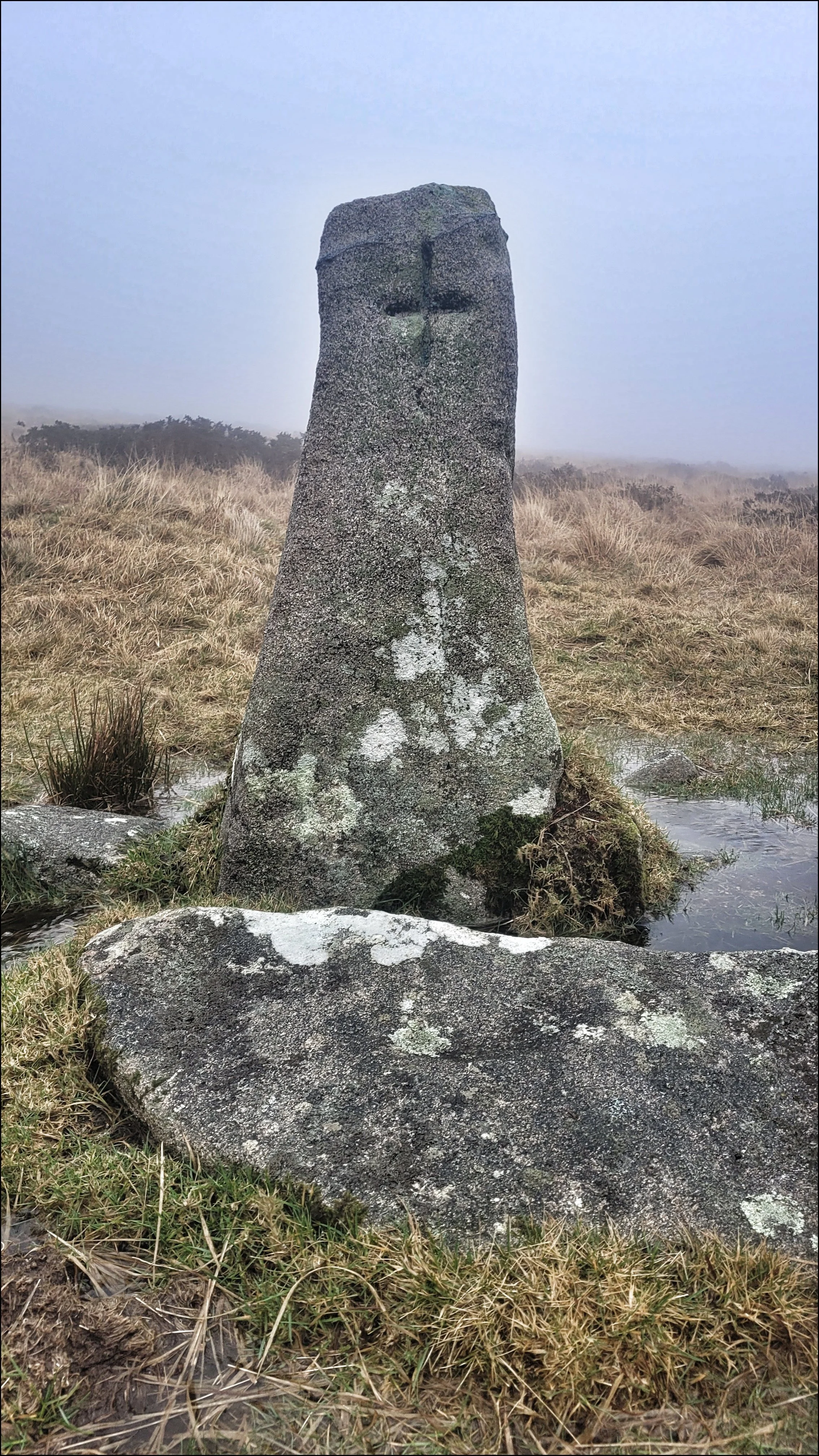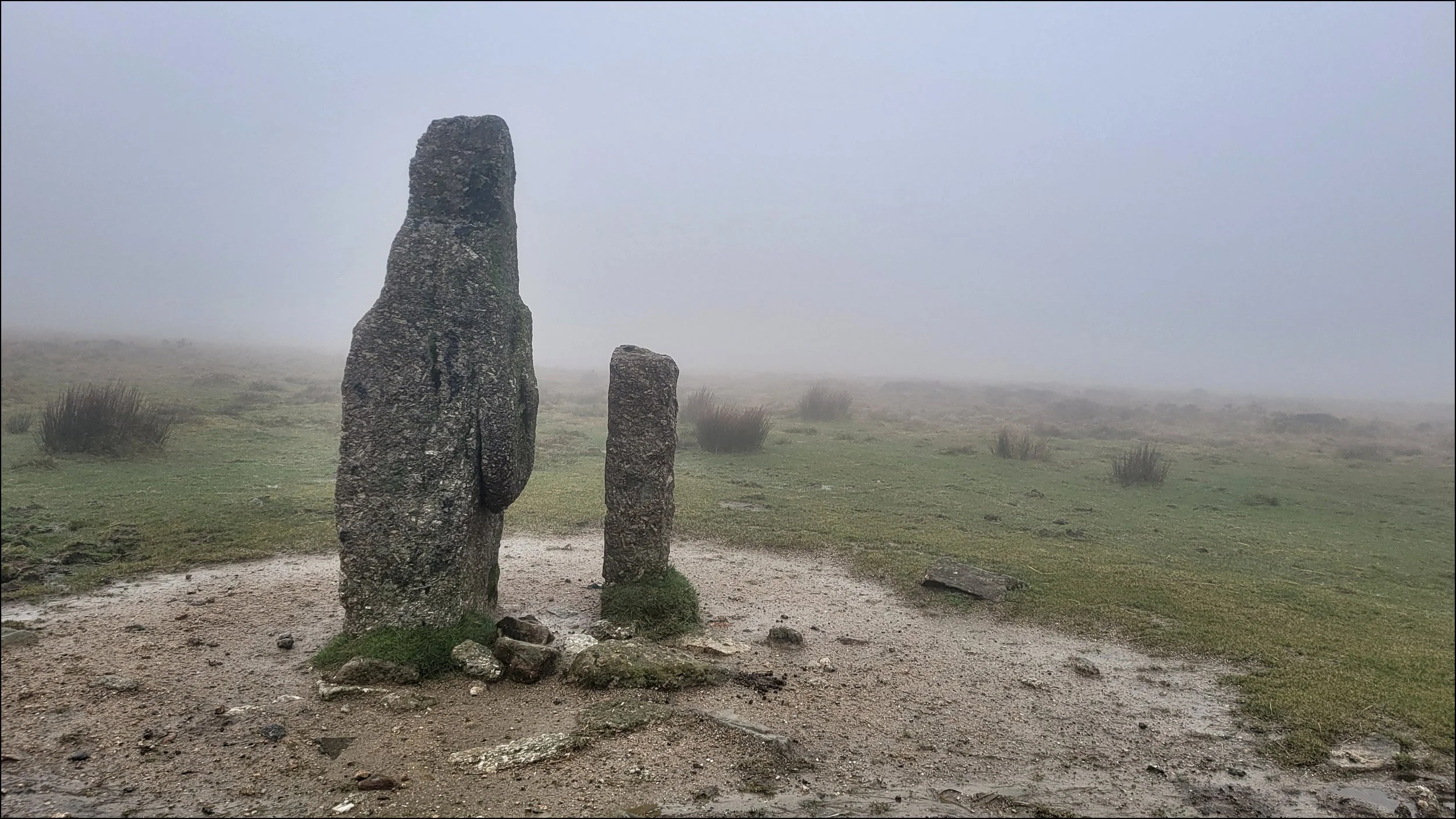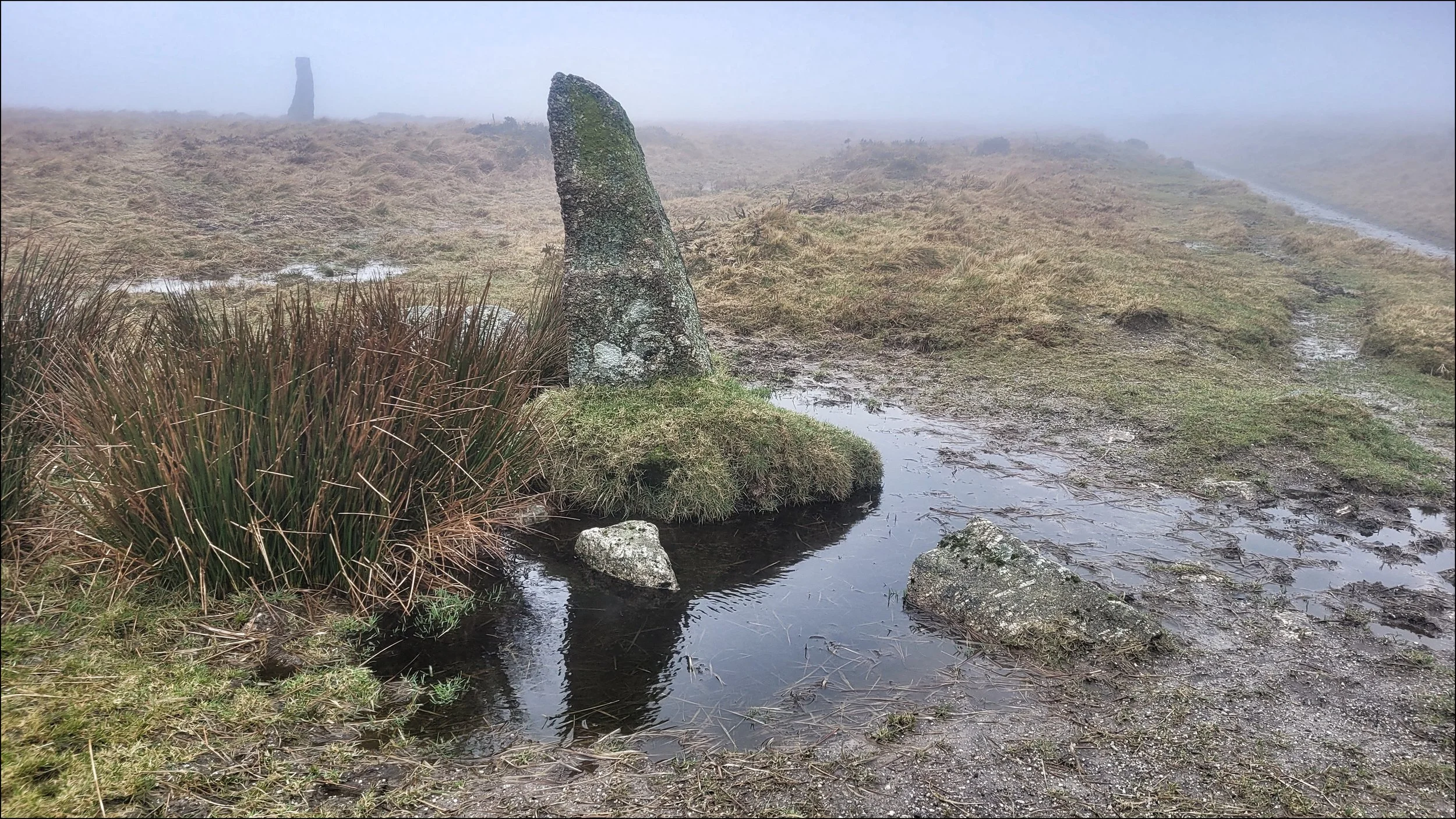Ancient Ways
21.02.2025
I had been parked up in Ivybridge for a few days waiting for the rain to stop. My luck changed at 1pm when the rain abated and from the weather forecast I judged I had enough of a good weather window to set off on a three and a half hour walk up to Butterdon and Piles Hill. These were the two most southerly stone rows and the last I would visit on Dartmoor.
I headed up through town passing the Stowford Paper Mill and found a quiet lane with high stone walls covered with thick green moss. At the end a five bar gate had signs warning walkers to keep to the path to avoid unnecessary erosion and to keep to the swards of firm ground. This was all very well but I had heard from locals about deep bogs called Quakers or Feather Beds hidden by a thin cover of Sphagnum moss that lay in wait for unsuspecting hikers. Beyond the gate the moor opened up before me with a choice of three paths leading off into the mist. I took the middle one which climbed gently up through fern and gorse past rocky outcrops to Butterdon Hill. I made slow progress and had to stop a few times to catch my breath. It felt desolate and eerie and just when I felt a strong sense of isolation, two ghostly figures suddenly emerged from the mist near a trig point before being enveloped in the mist once again. They looked like father and son from their relative height.
Yet again OS proved indispensable and GPS eventually lead me to the start of the Butterdon Stone Row. The stones in this row were even lower than at Upper Erme and it wasn’t long before I became disoriented and veered off from it. Unlike many of Dartmoor’s rows this one didn’t lead to or from a circle and didn’t have a terminal stone at the end of it’s two kilometer length. I found the stones again and followed them down into unseen landscape trusting where they lead me. Every now and then a large stone appeared and then at about a kilometer I came across a National Parks mounting post where walkers could mount their phones or cameras to record the nearby effects of erosion. There seemed little point in me doing this as the conditions were so bad. Beyond this as the row ascended to Piles Hill I came across a four foot stone with squarish sides, where on one of the sides a cross had been scribed into it. A little further on was a duo of stones, one larger than the other. They had been marked on the map as recumbent and the base around them looked crude and newly set. They reminded me of the two figures I’d seen at Butterdon Hill.
At the top of the hill the Butterdon Stone Row ended and not far after the last stone I found the transverse line of Piles Hill Stone Row roughly perpendicular with it. This one ran for a kilometer and again the larger stones were spaced out. Could these have been strategically placed enabling ancient travelers to keep to the trail in misty weather ? I headed east using the taller stones as beacons. As I placed my hand on each of them they seemed to be getting colder. I was glad when I reached the last stone and from here I felt the only sensible option was to retrace my steps back along the two rows. The mist was thickening and was turning threatening, provoking feelings in me of isolation rather than seclusion. It was time to get down off the moor.





